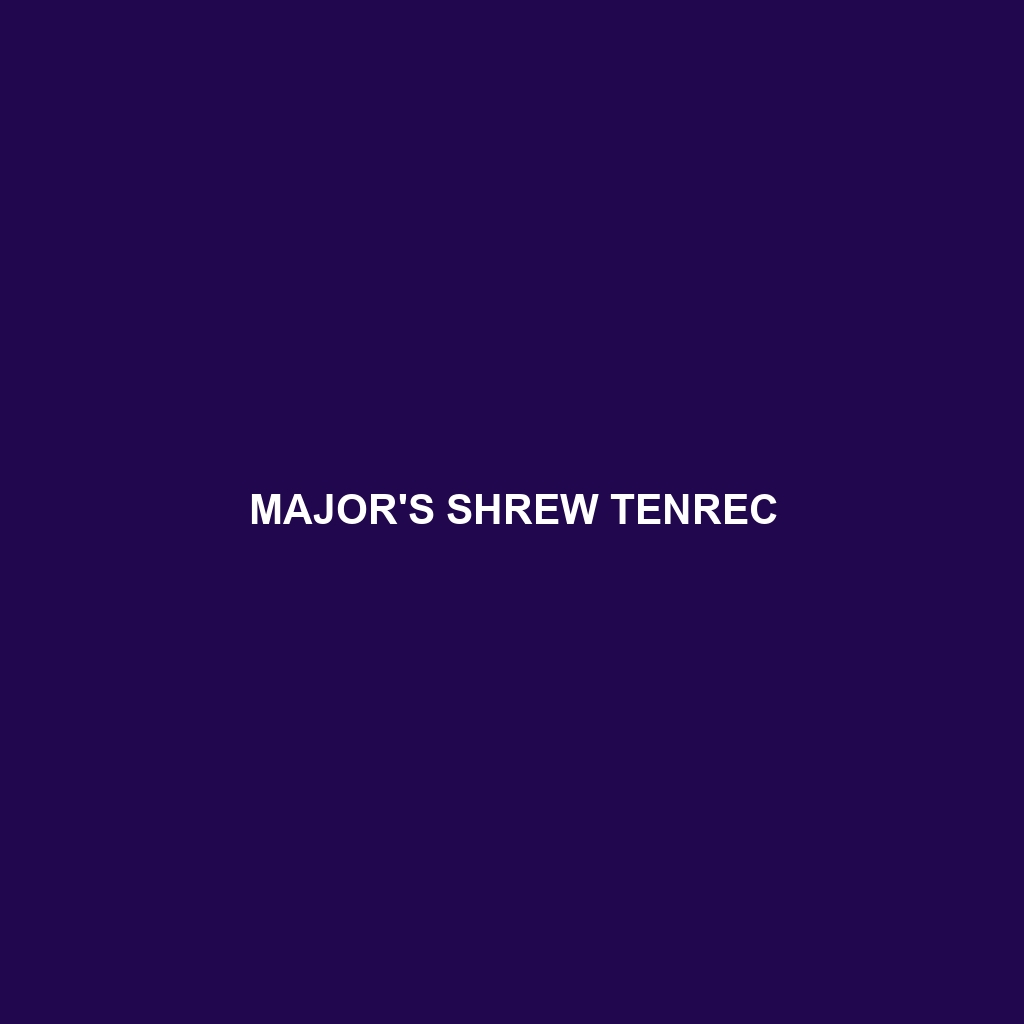Web-footed Tenrec: A Fascinating Creature of Madagascar’s Aquatic Realms
The web-footed tenrec (Limnogale mergulus) is a unique mammal indigenous to the island of Madagascar. Known for its remarkable adaptations to an aquatic lifestyle, this species is one of the few tenrecs to have evolved to thrive in water-rich environments. Often compared to otters due to its similar lifestyle, the web-footed tenrec exhibits several fascinating characteristics that make it a subject of interest for nature enthusiasts and researchers alike.
Physical Characteristics
Size: Web-footed tenrecs typically measure about 25 to 27 cm (10 to 10.6 inches) in length, including their tail, and weigh approximately 60 to 80 grams (2.1 to 2.8 ounces).
Coloration: Their fur is predominantly dark brown or black with a soft, dense undercoat that provides insulation. The ventral (underside) is generally lighter, often a creamy or pale yellow color.
Special Features: As their name suggests, web-footed tenrecs have partially webbed toes, which aid in swimming. Their limbs are short and robust, while their tail is laterally compressed, acting as a rudder to navigate through water. They have a keen sense of smell and whiskers (vibrissae) that help detect prey in murky waters.
Behaviors
Social Interactions: Web-footed tenrecs are generally solitary creatures, with individuals coming together primarily during the breeding season. They communicate through a variety of vocalizations and scent markings.
Feeding Habits: They are carnivorous, feeding mainly on aquatic invertebrates such as insects, crustaceans, and small fish. They use their sensitive whiskers to locate prey in the water and employ a quick, agile pounce to catch their meal.
Ecological Roles: In their aquatic habitats, web-footed tenrecs play a crucial role in controlling the populations of small aquatic organisms. This helps maintain a balanced ecosystem and supports the overall health of their habitats.
Habitats
Natural Habitats: Web-footed tenrecs are primarily found in freshwater habitats such as rivers, streams, and marshes within the rainforests of eastern Madagascar. They prefer slow-moving or stagnant waters where they can hunt effectively.
Adaptations: The web-footed tenrec’s adaptations for an aquatic lifestyle are numerous. Their webbed feet, dense waterproof fur, and streamlined body all contribute to their proficiency in water. Additionally, they can close their nostrils while diving, preventing water from entering their respiratory system.
Conservation Status
Current Status: The IUCN Red List classifies the web-footed tenrec as Near Threatened. Their populations are declining due to habitat destruction, pollution, and competition with invasive species.
Conservation Efforts: Efforts to conserve this species include habitat protection and restoration, pollution control, and research to better understand their ecology and behavior. Raising awareness about the unique biodiversity of Madagascar and the importance of aquatic ecosystems can also support conservation efforts.
Fun Facts
Unique Family: The web-footed tenrec is the only member of the genus Limnogale and is one of the few tenrecs that have adapted to an aquatic lifestyle, making it a unique representative of the Madagascar mammalian fauna.
Nocturnal Nature: These creatures are primarily nocturnal, meaning they are most active at night when they hunt for food and engage in other activities.
Remarkable Swimmers: Despite their small size, web-footed tenrecs are excellent swimmers, capable of navigating swiftly through water much like miniature otters.
The web-footed tenrec, with its unique adaptations and intriguing behaviors, highlights the incredible diversity of life found in Madagascar. Protecting this species and its habitat ensures the preservation of one of nature’s most fascinating little swimmers.
